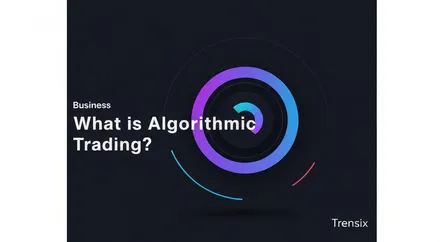Business
What is Algorithmic Trading?

Discover algorithmic trading, the use of computer programs to execute trades at high speeds. Learn why it's trending and how it impacts markets.
What is it?
Algorithmic trading, often called algo-trading or automated trading, is a method of executing orders using automated, pre-programmed trading instructions. These instructions account for variables such as time, price, and volume. An algorithm is a specific set of rules or operations designed to solve a problem. In finance, these computer programs execute trades at a speed and frequency impossible for a human trader, often taking advantage of tiny price discrepancies or complex market patterns. It removes the influence of human emotion from trading, allowing for disciplined and systematic execution of strategies, including high-frequency trading (HFT) where thousands of orders are placed in fractions of a second.
Why is it trending?
Algorithmic trading is trending due to massive advancements in computing power, data science, and artificial intelligence. Financial institutions leverage sophisticated algorithms to gain a competitive edge, enhance execution speed, and reduce transaction costs. The rise of machine learning allows these systems to adapt and learn from new market data, making them more powerful than ever. Furthermore, access to algo-trading tools is no longer limited to large institutions; retail trading platforms are increasingly offering automated strategy-building tools, making it more accessible to individual investors looking to systematize their approach.
How does it affect people?
For the average person, algorithmic trading has a significant, often invisible, impact on financial markets. It contributes to higher market liquidity, which can lead to narrower bid-ask spreads and lower transaction costs for investors. However, it also introduces risks. The high speed of algo-trading can amplify volatility and has been linked to "flash crashes," where market prices plummet and recover rapidly. This can affect individual retirement and investment portfolios without warning. Consequently, regulators are constantly working to understand and create frameworks to ensure market stability and fairness in an increasingly automated trading landscape.